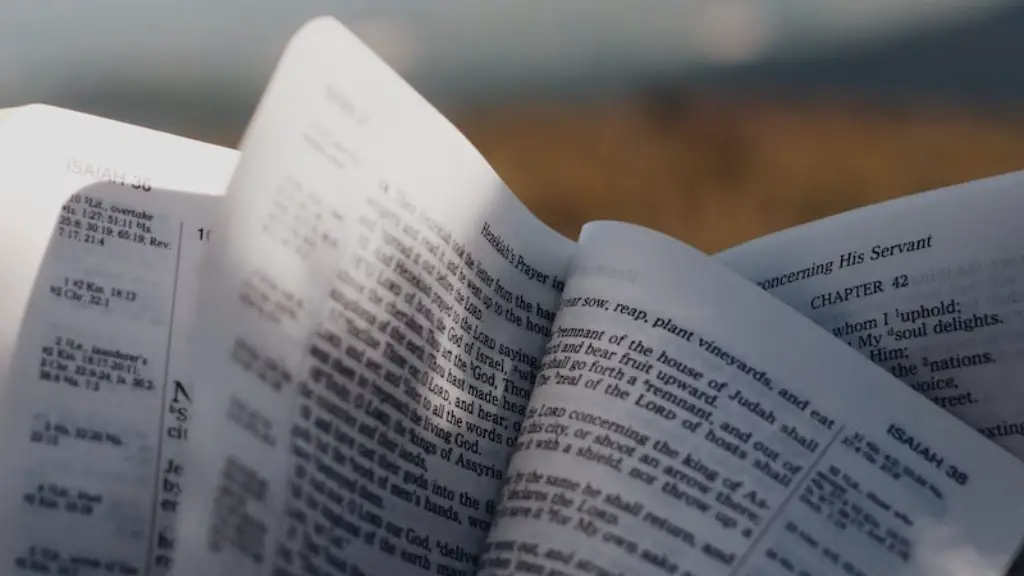The Meaning of the Serenity Prayer
The Serenity Prayer is a well-known prayer to ask for serenity and courage written by American theologian Reinhold Niebuhr in the early 20th century. The full text of the prayer reads:
“God, grant me the serenity to accept the things I cannot change, bravery to change the things I can, and wisdom to know the difference.”
Often times, it is quoted by those dealing with addiction, depression, anxiety, or difficult life situations.
The prayer acknowledges that life can bring pain and suffering, but if we acknowledge that there are some things which we can’t change, we can begin to accept them. By doing so, it helps us to move forward with clarity and direction. Additionally, when we recognize that there are certain aspects of our lives we can effect change on, this prayer becomes a call to action. Finally, it calls for wisdom, the ability to discern which of those aspects can and should be changed, and those which we need to accept and cope with.
The Origin of the Prayer
The prayer dates back to the 1940’s and is an adaptation of a 16th century prayer written by theologian Friedrich von Spee. Interestingly, the first known public use of the prayer wasn’t by Niebuhr, it was actually by alcoholics anonymous (AA). AA adopted and disseminated the prayer as part of its 12-step program.
The prayer became very popular amongst AA members, quickly taking on a life of its own. Though Niebuhr didn’t officially join AA, the Serenity Prayer remains closely associated with the organization.
It is believed that Niebuhr had been expressing a similar sentiment in his sermons before he penned the official prayer, but its true origin is unclear.
Where Is The Serenity Prayer In The Bible?
Though the prayer is widely known, many are quick to presume it must be found in the Bible. However, The Serenity Prayer is not in the Bible and cannot be attributed to any verse.
This begs the question, is the prayer a biblical sentiment? In some ways, yes. The sentiment behind the prayer—acceptance, courage and wisdom—are themes often associated with the Bible. This prayer is often referred to as a prayer of faith, and many theologians have interpreted it as such.
The Power of the Serenity Prayer
Despite it not being in the bible, The Serenity Prayer is a powerful tool in helping to cope with difficult life situations. It can be looked to for guidance and comfort, providing an additional layer of insight into how to best accept and cope with difficult situations.
Due to the prayer’s broad scope and simple, easy-to-follow formula, it can be easily incorporated into practice and used over and over again. It can be applied to a wide range of circumstances and not just for addiction or depression.
The prayer acknowledges that life can cause pain and suffering, and gives us the tools to move forward past it. It emphasizes the idea of accepting what we cannot control and doing what we can. It puts an emphasis on the importance of wisdom.
The Serenity Prayer Today
Today, the prayer has become an iconic piece of American culture. It is used and quoted by people of all religions and backgrounds. The prayer has been memorialized in books and songs. Its simple yet profound message speaks to people of all ages and faiths.
Though the Serenity Prayer is not in the bible, it remains an iconic piece of American culture. It’s ability to be used in virtually any situation, as well as its wide recognition, make it a powerful resource to turn to when in need of comfort and solace.
Adaptability of the Serenity Prayer
The Serenity Prayer has become popular for its adaptability. People of all faiths have put the prayer into their own contexts, adding value and additional meaning to it. This adaptive quality allows people to explore its meaning on a deeper level and tap into its power no matter the circumstance.
A common way people can make this prayer their own is to think of individual situations they face and change words to make the prayer applicable. Instead of asking for the courage to change what we can, we can ask for courage to face our fears. We can request the serenity to accept ourselves.
The practice of making the prayer your life experience makes it more meaningful as it gives us insight into our own issues and how to apply the wisdom of prayer to our own lives.
Exploring the Spiritual Implications of the Prayer
Many people believe that when we ask for guidance, prayers are answered. The Serenity Prayer is no different. It has been regarded as a prayer of faith, one to evoke spiritual healing and grace. For many, the prayer helps bring unexpected comfort in times of stress or worry.
One interpretation of the prayer is that it calls for faith, courage and wisdom. It asks us to have courage in the face of fear and to be wise enough to discern what we can and cannot control. By asking us to accept what we cannot change, this prayer emphasizes the importance of letting go and letting the Universe handle things.
Additionally, the prayer is a tool to help focus our energy on what matters. It is an invitation to accept the reality of our situation and focus our energy and attention on the things we can control.
Exploring the Psychological Implications of the Prayer
The Serenity Prayer can be seen as an invitation to challenge and assess our mental state. It can prompt us to reflect on our thoughts, feelings, and behaviors in order to gain self-awareness.
By considering the prayer from a psychological standpoint, we can begin to identify the challenges in our lives, determine the coping skills we need, and set ourselves up for success. The prayer encourages us to confront the challenges we face and reach for a state of balance and wellness.
Looking for Hope in Uncertain Times
It can be challenging to look for hope in uncertain times. The Serenity Prayer can be a helpful tool during such times, as it encourages us to use courage and wisdom when navigating challenges.
It’s a call to practice finding peace and calm even in the most difficult of circumstances. By accepting uncertainty and the things that are out of our control, we can focus on what we have control over. This can help alleviate anxiety and distress, and help us manage difficult situations.
The prayer also emphasizes the importance of resilience – the ability to mobilize our energy and resources to cope with a difficult situation and eventually move forward.
The Value of Gratitude
Another valuable lesson we can take from the Serenity Prayer is the power of gratitude. Gratitude is a powerful tool to help reframe our perspective and foster acceptance even in difficult situations.
It can be beneficial to practice gratitude to become mindful of positive aspects of situations, such as moments of joy or happiness that can remain hidden amidst difficulty and pain. Gratitude can help us find peace and contentment in life, even when times are tough, and ultimately lead to a greater sense of ease and well-being.
The Power of Words & Affirmations
Finally, The Serenity Prayer can also be seen as an affirmation. The power of words transcends beyond language, and can be just as powerful when spoken or written.
The Serenity Prayer serves as a reminder that the only person we can control is ourselves. Ultimately, it’s up to us to make the changes we need in order to be the happiest and healthiest version of ourselves. It can be used as a mantra to help bring clarity and focus to our day-to-day lives.
By practicing the affirmations found within the Serenity Prayer, we can cultivate peace and find strength to stay the course. It is a powerful tool to help us reset and move forward with grace.


